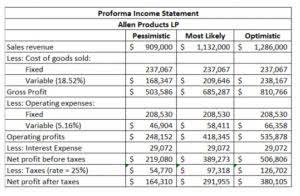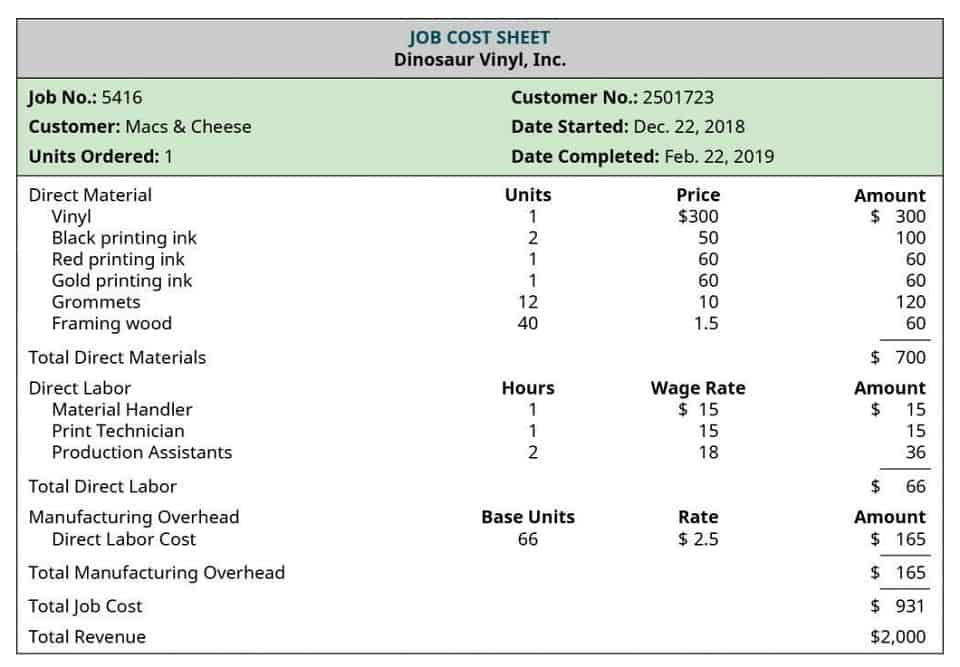In The News.
Lorem ipsum dolor sit amet, consectetur adipiscing elit. Ut et elementum elit. In quis justo sagittis, porta metus eu, volutpat risus. Nullam ac semper purus.
- May 21, 2025
- By admin@zisa
- 0 Comment
Concept 56: Effective Interest Rate Method and Amortization of Bond Discounts Premiums IFT World

As the bond matures, the carrying value will change, affecting the interest expense and the amortization of the discount or premium. However, the cash payment remains constant, as it is based on the principal amount and the stated interest rate. This dynamic is crucial for maintaining accurate financial records and understanding the impact of interest on bond accounting. When a corporation is preparing a bond to be issued/sold to investors, it may have to anticipate the interest rate to appear on the face of the bond and in its legal contract.
- The theoretically preferable approach to recording amortization is the effective-interest method.
- Using the effective interest rate method provides a more consistent and accurate representation of interest expense over the life of a bond.
- Assume that Discount Corp. issues 100, five-year, semi-annual, $1,000 bonds with an 8% coupon during a period of time when the market rate is 10% and so receives $92,278 because the coupon rate is lower than the market rate.
- Whether it’s for personal investment decisions, corporate finance management, or regulatory reporting, the importance of accurate interest calculation cannot be overstated.
- Since the bond matures in 5 years and pays interest semiannually, there will be a total of 10 interest payments.
Case Study: Effective Interest Method of Amortization in Action
On January 1, 2019, when the interest is finally paid, the entry would involve debiting the interest payable for $4,500 and crediting cash for the same amount. This transaction eliminates the liability recorded in the previous entry, reflecting the actual cash outflow to settle the interest obligation. The Effective Interest Rate Method offers a systematic way to reflect the true cost of borrowing over time.
- In short, the interest income or interest expense recognized in a reporting period is the effective interest rate multiplied by the carrying amount of a financial instrument.
- Accurate interest calculations contribute to reliable financial reporting, a cornerstone of a successful audit.
- In accounting, the effective interest rate method examines the relationship between an asset’s book value and related interest.
- In our example, there will be a $100,000 principal payment on the bond’s maturity date at the end of the 10th semiannual period.
- The effective interest method is used when evaluating the interest generated by a bond because it considers the impact of the bond purchase price rather than accounting only for par value.
Present Value of the Bond’s Maturity Amount

Under this method, the amount of interest expense in a given accounting period correlates with the contribution margin book value of a bond at the beginning of the accounting period. Consequently, as a bond’s book value increases, the amount of interest expense increases. When a bond is issued at a value above or below its par value, a premium or discount is created. In order to account for the bond properly, this premium or discount needs to be amortized over the lifetime of the bond. To illustrate these points, consider a bond issued at a discount with a face value of $100,000, a 5-year maturity, and a market interest rate of 10%.

How does a bond’s coupon interest rate affect its price?

In our example, there will be a $100,000 principal payment on the bond’s maturity date at the end of the 10th semiannual period. The single amount of $100,000 will need to be discounted to its present value as of Financial Forecasting For Startups January 1, 2024. These interest rates represent the market interest rate for the period of time represented by “n“. Always use the market interest rate to discount the bond’s interest payments and maturity amount to their present value. Next, let’s assume that just prior to offering the bond to investors on January 1, the market interest rate for this bond increases to 10%. The corporation decides to sell the 9% bond rather than changing the bond documents to the market interest rate.

Understanding Bond Carrying Value
- Holders of common stock elect the corporation’s directors and share in the distribution of profits of the company via dividends.
- By providing a systematic approach to interest income recognition, it ensures that financial statements accurately reflect the economic substance of financial instruments, aiding stakeholders in making informed decisions.
- By using the yield to maturity, the effective interest method aligns the interest expense with the economic reality of the bond’s cost, rather than just its nominal interest payments.
- The process of bond amortization significantly influences a company’s financial statements, affecting both the balance sheet and the income statement.
- To determine the bond’s price, we need to calculate the present value of future cash flows, which include periodic interest payments and the principal repayment at maturity.
- Creating an amortization table is a crucial step in managing bond transactions, as it provides the necessary figures for subsequent journal entries.
This meticulous approach demonstrates a commitment to financial transparency and strengthens stakeholder confidence. Accurate interest calculations contribute to reliable financial reporting, a cornerstone of a successful audit. On the other hand, the Straight-Line Method simplifies the amortization process by spreading the total amount of the premium or discount equally over the bond’s life.

Comparing Effective Interest Method with Straight-Line Method
- Using the effective interest rate method can significantly impact a company’s profitability ratios.
- As a result, it is the method that is required under IFRS and preferred under US GAAP.
- From the perspective of an investor, the amortization schedule is a window into the future cash flows they can expect from their investment.
- For investments like certificates of deposit or other interest-bearing instruments, the effective interest rate method calculates the interest income earned, considering the effects of compounding.
- After almost a decade of experience in public accounting, he created MyAccountingCourse.com to help people learn accounting & finance, pass the CPA exam, and start their career.
Investors and analysts when the effective interest rate method is used, the amortization of the bond premium often use effective interest rate calculations to examine premiums or discounts related to government bonds, such as the 30-year U.S. When the stated interest rate on a bond is higher than the current market rate, then traders are willing to pay a premium over the face value of the bond. Conversely, whenever the stated interest rate is lower than the current market interest rate for a bond, the bond trades at a discount to its face value.
About admin@zisa
Archives
- December 2025
- November 2025
- October 2025
- September 2025
- August 2025
- July 2025
- June 2025
- May 2025
- April 2025
- March 2025
- February 2025
- January 2025
- November 2024
- October 2024
- September 2024
- August 2024
- July 2024
- April 2024
- February 2024
- January 2024
- December 2023
- November 2023
- October 2023
- September 2023
- April 2023
- March 2023
- February 2023
- October 2022
- August 2022
- January 2022
- April 2021
- September 2020
- July 2019
- June 2019
- May 2019
- April 2019
- March 2019
- February 2019
- December 2018
- June 2014
- May 2014
Categories
- ! Без рубрики
- .gruporcv.es
- 1
- 1bet5
- 1GullyBet
- 1win Azərbaycan
- 1win-eg.net
- 1xbet1
- 1xbet2
- 1xbet3
- 1xbet4
- 1xbet7
- 1xslot.beregaevo.ru 4-8
- 1xSlots
- 1xslots app
- 1xSlots Casino
- 1xSlots Casino Argentina
- 1xSlots Casino Online
- 2
- 2Swipey AI
- 3 Reyes Casino
- 4
- 4friends.ru 50
- 4itok.ru
- 5
- 515santacruz.com3
- 5avto.ru 1000
- 7Slots
- 888Casino
- A new company in the German loyalty market: how to survive among large corporations using coupons
- a16z generative ai
- AbaBet
- academy-dl.ru 2
- access-bet.com.ng x
- Acheter des comptes de réseaux sociaux et publicitaires
- Admiral Casino
- adobe generative ai 2
- Adrenaline Online Casino
- Adult
- afyonsosyetepazari.com 2
- AI News
- airsoftparadise.cl
- Allumino Pietra
- almas-barbershop.de
- amminex.net 2
- ancor10
- ancor100
- ancor200
- ancorallZ
- ancorallZ 1000
- ancorallZ 10000
- ancorallZ 1250
- ancorallZ 1300
- ancorallZ 1310
- ancorallZ 1400
- ancorallZ 145
- ancorallZ 1500
- ancorallZ 1500_2
- ancorallZ 15000
- ancorallZ 15000TR2
- ancorallZ 17500TR2
- ancorallZ 20
- ancorallZ 2000
- ancorallZ 2000_2
- ancorallZ 2000_3
- ancorallZ 2000r
- ancorallZ 250
- ancorallZ 2500
- ancorallZ 275
- ancorallZ 2800
- ancorallZ 300
- ancorallZ 3000
- ancorallZ 3000s
- ancorallZ 3100
- ancorallZ 50%
- ancorallZ 500
- ancorallZ 5000TR2
- ancorallZ 600
- ancorallZ 750
- ancorallZ 776
- ancorallZ 800
- ancorallZ 900
- ancorallZ 9000
- ancorallZ dop
- ancorallZ201
- ancorZ 1000
- ancorZ 1500
- ancorZ 2500
- ancorZ 500
- andreschweighofer.com20
- Ankara Escort
- ankaratarotfali.com 1
- Announcements
- antalyaerenhali.com 2
- apolonio.escasinos-con-deposito-minimo-1-e
- Aqua & Hammered Tiles
- Aqua Diamond Tiles
- aquaservice-alicante.es
- aquinascenterphilly.org2
- aquipesca.com z2
- Arena Esportiva
- arkhpva.ru 500
- articles
- atlas-export.c
- augustent.com 2
- Aviator
- Aviator Game
- Aviator Predictor
- axiomaltd.ru 1500
- Bakırköy Escort, Ataköy Escort
- Bamboo Art
- bambturkiye.com 2
- bancorallZ
- bancorallZ 100
- bancorallZ 1200
- bancorallZ 1250
- bancorallZ 200
- bancorallZ 500
- bancorallZ 620
- bancorallZ TP2 15000
- bancorallZ TP215000
- bancorallZ240
- bancorZ 2500
- bashpirat.ru 2000
- bating9
- bc-game-ng.ng2
- bc-game-ng.ngen-ng x1
- bcg4
- bcgame1
- bcgame2
- bcgame3
- bcgame4
- bedava-slot-oyna.org 1000
- bedava-slot-oyunlari.com 1500
- bedwinner1
- behappymama.ru 300
- beregaevo.ru 36
- berkeleycompassproject1
- berkeleycompassproject2
- besstdiplomsa
- Best Canadian online casinos for real money (Frances Bula review)
- Best Casino and Betting Site Online
- Best Non GamStop Casinos UK 2025
- Best online betting sites and bookmakers in Ghana
- Best Online Casino Games for UK Players in 2025
- Best Online Casino UK
- Best Online Casinos UK
- Best Online Gambling Platforms
- Best UK Casino Sites 2025
- bestappstrading
- Beste Online Casinos
- besyohocam.com 1
- Bet on Alfa
- bet1
- bet2
- bet3
- bet4
- betandreas
- betandreas2
- betandreas3
- betcasino1
- betcasino4
- betcasino5
- betgr8-kenya.ke x
- BetLion
- BetMorph
- Bets VIP
- Betsafe
- betspecial.co.uk 1
- betting2
- betwinner1
- betwinner2
- betwinner3
- betwinner4
- bezflash.ru 5
- bezhinternat.ru 120
- bguzel.ru 20
- biolifedental.es
- biolmarket.ru
- blackandyellowotakugamers.com c
- blog
- Bolly Game Casino
- Bollywood
- bomboneslupita.com
- Book Of Ra
- Book of Ra Classic
- Bookkeeping
- bootstrap-3.rucss.php 900
- brbcva.org2
- brunch-cafe.ru
- brunch-cafe.ru1
- brut-club.ru 1500
- buitenlandse online casino2
- Buy medicines online without prescription
- calculadora
- CashPot
- Casino
- Casino Games Online 2025
- Casino Med Snabba Uttag
- Casino Online
- Casino online y apuestas deportivas en línea
- Casino uden ROFUS
- Casino utan svensk licens
- casino-15-11-1
- casino-17-11-1
- casino-25-11-1
- casino01-12-1
- casino1
- casino1-1
- casino10
- casino10-1
- casino11
- casino13
- casino14
- casino15
- casino16
- casino17
- casino18
- casino18-1
- casino19
- casino2
- casino21
- casino22
- casino23
- casino24
- casino27
- casino28
- casino29
- casino3
- casino31
- casino4
- casino5
- casino6
- casino7
- casino8
- casino9
- casinobet1
- casinobet2
- casinobet3
- casinobet4
- casinonon1
- casinos
- CATET Empowers Global Industrial Lifting Solutions
- cccituango.co
- cccituango.co 14000
- cerkezkoyisilanlari.com 1500
- Chicken Pirate
- Chicken Road
- chickenroad
- chipmax.in4
- Chromo Art
- chumak-mosokna.ru 500
- ciroillattaiodarmstadt-darmstadt.de
- citybike-nordhorn.de
- cityoflondonmile1
- cityoflondonmile2
- cityoflondonmile3
- Cloud Cryptocurrency Mining
- Cloud mining
- Cloud mining platforms for Bitcoin and Dogecoin
- Clubhouse Casino
- Cocktail Stripes
- çok-kazandıran-slot-oyunları.net 1000
- Color
- Comprar contas de redes sociais e de publicidade
- Coolbet
- cossac.org
- cpaudec.cl x
- Crazy Time
- Credit Card Online Casinos
- Cryptocurrency service
- csb-online.ru 500
- Customer Relationship
- ð¥ð¢ð╗ð░ð©╠åð¢ ð║ð░ðÀð©ð¢ð¥ ð┐ð¥ð╗ÐîÐêð░23
- daavdeev.ru 4-8
- daem-vzaem.ru
- dafbet.neten-inmobile-app x1
- danieldelavega.com.ar c
- detsad-51.ru 500
- detsad45.ru 700
- developmentspb.ru 150
- Digital Coupons As The Best Solution For Customer Retention
- diplomsvuz
- Discount Coupons As A Smart Customer Retention Tool
- DISCOUNT COUPONS: ENGAGEMENT WITHOUT TARGETING COSTS
- dkmarino.ru 2000
- dmagri.in
- dogakentkres.com 1
- domovar-shop.ru 600
- Doradobet
- Doradobet App
- dou9ustilimsk.ru 30
- doy-ckazka.ru
- dudkavapeshop.ru 700
- durmusaydemir.com 1000
- dvsl.in c2
- EasyBet
- eatfit.es
- ekb-banki.ru 2500
- elagentecine.cl
- en-kazanl-slot-oyunlar-66b19ona.net 1000
- esportnow_legal
- esportnow_online
- esportnow-Kasyna na Prawdziwe
- esportnow-wyplacalne
- esqueleto-explosivo
- etopechen.ru 500
- exbroker1
- Excelbet Casino
- exness2
- exness3
- exoneit.de
- Facebook Casino Games
- Fairspin-casino
- farma3
- farma4
- farmaci1
- farmacia1
- farmacia2
- Fast Withdrawal Casinos UK
- fathimajilna.com
- Fatih Escort Bayan
- fBET
- fckh.ru 1500
- fcommunity.ru
- femicid.ru 20
- FinTech
- fiser.es
- fishingbaits.ru 2000
- flagshipuniversity.ru 2
- Forex Trading
- Forma Metallo
- fraternize06.ru 100
- French Path
- Fubet
- galernaya20.ru 600
- gambling
- gangiborgodeiborghi
- Gates of Olympus
- gates-of-olympus-oyna-demo.com 1000
- gdouuds.ru 500
- gel-school-19.ru 300
- General News
- Germania Sport
- Get's Bet
- ggokpoker-ru.ru
- ggpoker-ru.ru
- Global gaming platforms overview
- Golden Riviera Casino jeux de casino en ligne en argent réel
- goodsofwood.ru 1
- Grand Murano
- Grand Sophie
- greekgirlscode.com
- grodno.staybook.by
- haciozkan.com 1000
- Halkali Escort Services
- Halkalı Escort Bayan
- hannajohn.es
- Harumslot Situs Slot Online Terpercaya di Indonesia
- Health
- herbolarioqueti.es
- Home improvement services
- hoteldelafuente.com
- how does generative ai work
- hozsekrety.ru 1000
- hrishikeshpathak.com 2000
- i-kalendar.ru 500
- i-ksiazka.pl
- I7Bet
- icestupa1
- icestupa12
- icestupa13
- icestupa2
- icestupa3
- icestupa4
- icestupa6
- icestupa8
- igle-net.ru 240
- igryfort.ru 4-8
- illuminatethebike.com x
- Imperador Bet
- inasound.ru
- infectex.ru
- Infinity Bet
- infopot.ru 2500
- Inkabet App
- Inkabet App APK
- Inkabet App Descargar
- Inkabet App Play Store
- Inkabet Casino App
- inquisitivereader.com z3
- insectsqasim.com2
- intellectplanet.ru 1500
- iskra-guitars.ru
- Istanbul Escort
- İstanbul Escort Hizmetleri
- isu-pb.ru 1000
- IT Вакансії
- IT Образование
- italyanmutfagihaftasi.com 2
- jaya9
- jaya91
- jaya92
- jaya9casino
- jbcasino2
- jetton 23.09
- Jetton KZ
- Jetton RU
- jetton ru 23.09
- Jeux
- Job Name
- Kadıköy Escort
- kamathtrafo.co.in2
- Kapow Casino
- kayedstudio.com
- kazandiran-slotlar.com 1500
- kazandıran-slot-siteleri.net 1000
- kazino-onlayn-reyting.xyz 2
- kazino1
- keflibicak.com 1000
- kentt.xyz
- kgskouskosh3.ru 4000
- kilmezedu.ru 240
- Kinghills Casino
- kiprtravelavto.ru 900
- kistevoytrenazherpowerball.ru 1
- klgsystel.com2
- Klubnika
- KMSAuto
- KMSpico
- komod-testfeld
- konnersant.ru 2
- koruhastabakici.com 1000
- kromatografi2023.org 2
- krsosh.ru 1000
- Küçükçekmece Escort
- kurumkan.info
- kvadro-extreme.ru
- L’univers du jeu, du sport et de la crypto en 2025
- la-pepi.es
- LagunaBet
- lapistaki.com 1000
- larocca.cl
- lenovo-smart.ru 2000
- leonov16.ru 500
- Lev 2
- LiberSave Coupons as a Customer Retention Tool for Small and Medium-Sized Businesses
- lightnovosti.ru 300
- lmgsport.pt
- ltrading17
- luckhome.ru 2000
- Lucky Jet
- lucky-star1
- lucysblueday.com
- lunarpsikoterapi.com 1000
- lusigroom.ru 500
- machintech.ru
- magadomobilhome.com
- Magic Jackpot
- maisondecharme.ru 1000
- mandarin-oriental.ru
- marketpskov.ru 700
- Max Millions Casino
- MaxBet
- mbdou-18-41.ru 700
- mbousosh10.ru 4-8
- mdash.ru 170
- mebel-elegya.ru 1500
- medipekfashion.com 1000
- medmind.ru 4-8
- medreg75.ru1
- melbetcanada.org9
- mellyoitzl.org 2
- Memo Casino
- Mersin Escort ve İlçeleri İçin Güvenilir Bayanlar
- meta-park.es
- Metal Mix, Marble Metal Mix
- Metal Tiles
- metody-platnosci.pl
- minaevlive.ru
- Mines Spribe
- minoritybusinessesmatter.org2
- missionaguafria.com2
- mobil-slot.com 1500
- mobile proxies
- Models
- moskovsky-vrach.rucasino 500
- Mostbet
- Mostbet AZ
- mostbet2
- mostbet3
- mostbetceska.comcs-cz x
- Mr Beast Casino
- Multilevel Pattern
- municasablanca.cl
- murobeachclub.es
- mvclinic.ru 50
- mycardbonus.ru
- nastolki18.ru 150
- News
- News – Copy (2)
- News – Copy (3)
- No KYC Casinos UK 2025
- no kyc casinos2
- nodeposit
- normel-spb.ru 2500
- NOVE
- Official Betting and Casino Website
- Official online betting and gaming platform
- okggpoker.lol
- okn53.ru
- okonlineplay.live
- Omegle.fan free anonymous video chat with strangers online
- onlayn-kazino-reyting.xyz 2
- Online betting and casino platform
- online casino
- Online casino and betting platform
- Online casino and sports betting site
- online casino buitenland
- online casino in usa
- online casino usa
- Online games and casino
- online-casino-1buitenland
- online-casino-dixonleasing
- onlineplaypoker.cyou
- opium-sale.ru 700
- orthopaedic-partners.de
- otolastikbul.com 1500
- otzivorgt.ru 10
- p0kerdom.wiki
- panyteatro.com.ar c1
- Pars
- pausenraum-freiburg.de
- Penalty Shoot Out
- pereezd-kaliningrad.ru 500
- pereezd.pl.ua
- persona-maslovka.ru 700
- photonicsperm.ru 2
- Pietra Tiles
- Pin Up
- Pin Up bahis
- Pin Up Casino
- PIN-UP
- Pin-Up AZ
- Pin-Up indir
- Pin-Up Online
- Pin-Up oyunu
- Pin-Up TR
- Pin-Up UZ
- Pin-UP VCH
- Pin-Up yukle
- Pinco
- Pinco Casino
- Pinco TR
- PinUp
- Pinup kz
- Pinup kz 1
- Pinup kz 2
- pinupcasinos-az.com
- pirlotv.mx c2
- piscinamunicipalaguarda.com
- pixelsnvoxels.com2
- pizza-n-stuff-duncan.com
- Plataforma de casino y apuestas en línea
- Plateforme de paris en ligne
- Plateforme officielle de jeux et paris en ligne
- Play online casino
- play-7k.live
- playpoker-ru.ru
- playpokeronline.click
- Plinko
- pocket1
- pocketoption1
- pocketoption2
- pocketoption3
- pocketoption4
- podberi-monitor.ru 240
- poker-doms.store
- poker.ok-play-poker.click
- poker.play-online-ok.store
- Pokerdom
- pokerdom-casino.digital
- pokerdom-cazino.ink
- pokerdom-kaz.store
- pokerdom2.guru
- pokerdom24kz.wiki
- pokerdomkaz.live
- pokerdomkazahstan.biz
- pokerplay-ru.ru
- pokervdom.info
- poland
- Porn1
- porngames
- Post
- posts
- Powerbet
- Premier Bet
- premium-cashback.ru 2500
- prestamos
- pricepblog.ru 4-8
- primexbt1
- primexbt2
- primexbt3
- Project Reference
- Project Reference Grid
- Promotions & Offers
- PSK Casino
- psy-archetypes.ru 1000
- pucenkoclinic.ru 5
- pytube.io5
- r7-kasino8.site
- r7cs.club
- r7cs.info
- r7cs.vip
- r7csn.click
- r7csn.club
- r7csn.lol
- r7csn.onl
- r7csn.pro
- r7csn.xyz
- r7kazino.life
- Rabbit Road Game
- radioshema.ru
- re-movieawards.ru 500
- ready_text
- remont-certina.ru 500
- restaurante regaleira
- reyting-luchshih-kazino-onlayn.xyz 2
- reyting-luchshih-onlayn-kazino.xyz 2
- reyting-onlayn-kazino-evropy.xyz 2
- reyting-onlayn-kazino-rossii.xyz 1
- reyting-onlayn-kazino.xyz 2
- reyting-top-10-onlayn-kazino.xyz 1
- rickyscasino.org2
- ridu-store.ruonas 500
- rigged-soccer-matches.com2
- rikmorti.ru 15
- riobet5.xyz
- rosomed2020.ru 20
- roulettespin
- rsem.pro
- rugorod.info 2
- saas24.ru 300
- saltlife.ru 500
- salto.pk3
- samoproidet.ru 500
- samsunservisi.com 1500
- sauna-dubrava.ru 1000
- SBOBET1
- sch2kr.ru 120
- school-64.ru 240
- school217.ru
- scmonjasinglesas.cl
- scommesse1
- sdjs.ru 1
- sdjs.ru 2
- selectorcasino.lol
- selfmadeconcrete.ru
- ser-restaurant.com2
- sevinf.ru 2
- Shape
- shishaparadise.escasinos-retirada-instantanea x7
- shkola-90.ru
- shophistoryisfun.com 3
- silvergold.hu
- sinanspor.com 1500
- sintai74.ru 120
- Sisal Rib
- Situs Bos138 Slot Maxwin
- skiptonmarket.net 1000
- skovoroda-kastrulya.ru 500
- skovorodkaclub.ru 10
- Skythor
- slot-destek.com 1500
- Slotbox
- Slots and betting games online
- SlotsDon Casino
- snor.rufonbet 200
- snuut.es
- Sober Living
- Software development
- sondakikaguncelhaber.com 1
- sopetel.com2
- Sophie
- sopkol.ru
- Space Wins Casino
- spbunesco.ru 2000
- Spin Mills Casino
- Spinbara Casino
- Spiral & Wave Tiles
- Sportingbet
- Square Login
- ST-4
- Stake Casino
- Standard Pattern Tiles
- Stanleybet
- STBet
- Steelico
- Steven Hills
- streampark.ru 300
- Superbet
- Sweet Bonanza
- sweet-bonanza.best 2000
- sweetcards.ru 1000
- sysgestionerp.cl
- t.meofficial_site_pokerdom 3000
- t.meRiobet_mirror 2000
- t.meriobet_promocod 3000
- t.meriobet_zerkalo_na_segodnya 3000
- t.meriobetcasino_official 3000
- t.mesofficial_site_pokerdom 3000
- t.mesriobet_promocod 3000
- t.mesriobet_zerkalo_na_segodnya 3000
- t.mesriobetcasino_official 3000
- tangyra.ru 2
- tecrubekonusuyor.net 1000
- telmih.com 1000
- test-metod.ru
- text
- theedgesport.cl
- themadisonmed.com
- thenorthfacemontturkiye.com 1
- Top bookmakers et bonus en ligne
- Top Crash Games and Online Casinos in 2025
- topcricketbookies.com c1
- Tortuga Casino
- tourbillontime.ru 500
- trader10
- trading11
- trading13
- trading14
- trading4
- trading6
- trading8
- traiding1
- traiding2
- trauma-gvkg.ru
- Turkie Casino
- Türkiye Futbol Kulüpleri ve Tesisler
- Türkiye Futbolu: Kulüpler, Kadrolar, Tesisler (2026)
- Türkiye’de futbol ve spor
- Turkiye’deki futbol kulüpleri ve spor hizmetleri
- tut-boxing.ru 2000
- uaw-chrysler.com 1
- ugrapromforum.ru 2
- Uncategorized
- under-prog.ru 300
- Up X
- up-capital.ru 5
- up-x-on-15590-55
- up-x-on-15590-679
- Upcoming Events
- utkul.ru 1500
- valentina-bondareva.ru 500
- vallesdesantamaria.cl x3
- Vavada
- verin-tennis.ru 5
- verin-tennis.rubezdepozitnyy-bonus-kazino 20 30
- veshka-adm.ru 1500
- veyorum.com 2000
- victorbout.ru 500
- vinoora.ru 150
- virtual-ostrov.rurukotvornye-obektychertov-most 100
- vodavodavl.ru 300
- vodka-casino-vhod-promokod.ru 5
- Volcano Bet
- volgambk.media 20
- volnataganrog.ru 500
- volta.computer4
- vorzeit-hessen.com 3
- VPN
- vrclub-tron.ru 36
- vsezhivoe.ru2
- vulcn.club 2000
- vulcn.pro 2000
- vulcn.xyz 2000
- vulkn.online 2000
- Water Tiles
- WePoker
- What Should I Read Next?
- wichtelglueck-badwindsheim.de
- WINBET
- winwin24.onl
- winwin24.pro
- winwin24.quest
- winwin24.vip
- winwincasino
- wireplay
- wow-party.ru
- wsciencedirect.com 1
- wulkan.cloud
- www.betspecial.co.uk 10
- www.kartaznaniy.ru 10
- www.kartaznaniy.ru 50
- www.lepetittrianonstyle.es c
- www.prstudent.ru 5
- www.sarkparishchurch.org.uk c2
- www.startandgrowenterprise.uk x2
- www.ubvyborg.ru 300
- xn—–9kcfobab0aa5cdj0ali8e4i.xn--p1ai 500
- xn—-7sb3aca9ahcif.xn--p1ai 1500
- xn—-7sb3aca9ahcif.xn--p1ai 2000
- xn--17-8kc3bfr2e.xn--p1ai 240
- xn--18-6kca3cewxj5c.xn--p1ai 50
- xn--438-qdd8ah6a2fo.xn--p1ai 1500
- xn--46-6kc8bnagjfo4b.xn--p1ai 2000
- xn--80agvaoebnfku.xn--p1ai
- yacivic.ru 20
- ysftesisat.com 1
- ZanziBet
- zateyashar.ru 500
- Zlatnik
- zurkastanie-marl.de
- безопасныйставрополь.рф ancorallZ 900
- захисні плівки для авто
- Курсы и обучение Blender 3D для начинающих и профессионалов
- Лучшие казино и букмекеры онлайн
- Лучшие онлайн казино
- Мелбет
- мобільні проксі
- Мостбет
- Недвижимость в Москве
- Нова папка (2)
- обклеювання авто у Львові
- оклейка авто в Киеве
- оклейка авто в Одессе
- Онлайн-казино Парік 24
- Плей Фортуна
- Покердом
- Покердом 2025
- Покердом онлайн казино
- Рабочее зеркало Melbet
- Рабочее зеркало Мелбет
- Рейтинг лучших казино и сайтов для ставок
- Решения для медиабаинга и арбитража
- Робоче дзеркало Мелбет
- Сasino
- Сasino Utan Svensk Licens 2025
- спецтехника52
- Ставки на спорт і онлайн казино
- стоматологія на Оболоні
- Таро Онлайн
- Финтех
- Форекс обучение
- Фриспины за регистрацию в онлайн казино: плюсы и минусы
- Эльдорадо казино

Recent Comments